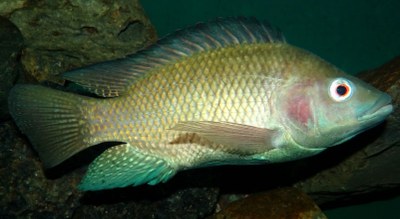Thesis defence by Pamphile Agbohessou
- https://ilee.unamur.be/events/thesis-defence-by-pamphile-agbohessou
- Thesis defence by Pamphile Agbohessou
- 2022-05-09T14:00:00+02:00
- 2022-05-09T17:00:00+02:00
- When May 09, 2022 from 02:00 PM to 05:00 PM (Europe/Brussels / UTC200)
- Where D11 (5 Rempart de la Vierge, 5000 Namur)
- Web Visit external website
-
Add event to calendar
 iCal
iCal
Title: Les farines de larves de mouches enrichies en acides gras essentiels comme ingrédients alimentaires pour le tilapia du Nil (Oreochromis niloticus)
Abstract
The present study is part of a project that aims to develop feed formulations based on insect meals and plant by-products and to evaluate them on the zootechnical performance, biochemical composition and health status of farmed Oreochromis niloticus. Indeed, one of the main challenges of the aquaculture sector is to replace fishmeal and fish oil with more sustainable, less expensive and more environmentally friendly ingredients. In general, insects such as flies are nutritious organisms that have levels of essential amino acids very close to those of fish meal. Fly larvae are capable of growing extensively on a variety of substrates, including organic waste. However, fly larvae meals contain varying amounts of chitin which can negatively influence protein availability and digestibility and thus reduce growth performance in fish. In addition, fly larvae meals are deficient in polyunsaturated fatty acids PUFA and long chain polyunsaturated fatty acids LC-PUFA. Fish require these physiologically essential fatty acids, which either cannot be synthesized de novo or are not produced in sufficient quantities to meet the organism's needs for general metabolic functions, growth, cell physiology, immunity and reproduction.
The main objective of the present work is to develop dietary strategies to effectively replace fish meal and fish oil in the diet of Oreochromis niloticus by fly larvae meals, nutritionally enriched in PUFAs and LC-PUFAs.
 Several experiments were designed to enrich fly larvae with PUFA and LC-PUFA and to completely replace fish meal and fish oil with fly meal nutritionally enriched with essential fatty acids in the diet of Oreochromis niloticus. The ratios of n-3/n-6 fatty acids varied from 0.08 to 0.64% in the meals of the larvae of the black soldier fly, Hermetia illucens (BSF) and from 0.37 to 3.88% in the meals of the blowfly, Chrysomya putoria (CP) produced on different substrates. The results of this experiment showed a better efficiency of LC-PUFA enrichment in CP larvae compared to BSF larvae, resulting in a greater stimulation of the fish nutrient utilization processes and thus a greater growth capacity. The composition of linolenic acid (ALA) or docosahexaenoic acid (DHA) in the dorsal muscles of fish fed the BSF diet enriched with ALA, or the CP diet enriched with eicosapentaenoic acid (EPA) + DHA, was comparable to that of the control fishmeal and fish oil diet. All the fly meal diets increased the muscle EPA levels of the fish, except for a reduction in the fish consuming the ALA-enriched BSF diet. Furthermore, a BSF meal-induced decrease in fish carcass fatty acid quality can be avoided by a well-defined PUFA enrichment protocol.
Several experiments were designed to enrich fly larvae with PUFA and LC-PUFA and to completely replace fish meal and fish oil with fly meal nutritionally enriched with essential fatty acids in the diet of Oreochromis niloticus. The ratios of n-3/n-6 fatty acids varied from 0.08 to 0.64% in the meals of the larvae of the black soldier fly, Hermetia illucens (BSF) and from 0.37 to 3.88% in the meals of the blowfly, Chrysomya putoria (CP) produced on different substrates. The results of this experiment showed a better efficiency of LC-PUFA enrichment in CP larvae compared to BSF larvae, resulting in a greater stimulation of the fish nutrient utilization processes and thus a greater growth capacity. The composition of linolenic acid (ALA) or docosahexaenoic acid (DHA) in the dorsal muscles of fish fed the BSF diet enriched with ALA, or the CP diet enriched with eicosapentaenoic acid (EPA) + DHA, was comparable to that of the control fishmeal and fish oil diet. All the fly meal diets increased the muscle EPA levels of the fish, except for a reduction in the fish consuming the ALA-enriched BSF diet. Furthermore, a BSF meal-induced decrease in fish carcass fatty acid quality can be avoided by a well-defined PUFA enrichment protocol.
Results of another experiment showed that BSF fatty acid-enriched meals can completely replace fish meal and fish oil, and that chitinase supplementation in the LC-PUFA-enriched BSF diets improved digestibility, growth, intestinal health, resulted in beneficial changes in the gut microbiota and enhanced the innate immune defense of Oreochromis niloticus after exposure to Escherichia coli lipopolysaccharides.
Overall, the results of this thesis showed that BSF meal enriched with LC-PUFAs and a dose of 5 g/kg of feed of chitinase is an effective alternative to fish meal and fish oil in feeds used in aquaculture.
Pamphile will present the results of his PhD thesis, conducted in the Biology Department/URBE under the supervision of Patrick Kestemont.
Zoom link for externals: https://us02web.zoom.us/j/88238978574?pwd=UXRpdmhWUEVJRlBPUi9STDAvVWFyQT09
 Institute of Life, Earth and Environment
Institute of Life, Earth and Environment

